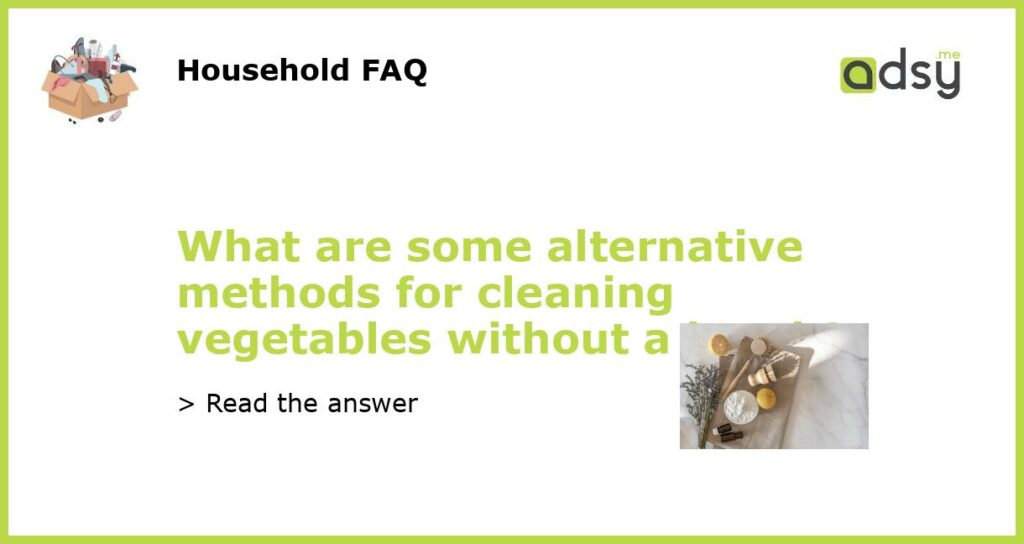Soaking in Vinegar Solution
One alternative method for cleaning vegetables without a brush is by soaking them in a vinegar solution. Vinegar is known for its antimicrobial properties and can effectively kill bacteria and germs on produce. To use this method, mix one part vinegar with three parts water and let your vegetables soak in the solution for 10-15 minutes. After soaking, rinse the vegetables under running water to remove any vinegar residue. This method is especially useful for leafy greens and fruits with harder-to-reach crevices.
Research has shown that vinegar is effective in reducing the presence of certain bacteria on produce when compared to water alone, making it a useful option for cleaning your vegetables without a brush.
Salt Scrub
If you don’t have a brush available, using a salt scrub can be an effective alternative for cleaning vegetables. Simply mix salt with a small amount of water to make a paste-like consistency. Rub this mixture gently onto the surface of your vegetables, focusing on any dirt or residue. The abrasive nature of salt will help remove dirt particles and other contaminants. Once you have scrubbed the vegetable, rinse it thoroughly with running water to remove any remaining salt.
This method is particularly useful for hard-skinned vegetables like potatoes and carrots, as it helps remove dirt and debris from their surfaces without causing any damage.
Baking Soda Solution
Baking soda is a versatile household item that can also be used to clean vegetables without a brush. Combine one tablespoon of baking soda with one cup of water to create a cleansing solution. Dip a clean cloth or sponge into the solution and gently scrub the surfaces of your vegetables. The baking soda acts as a mild abrasive, helping to remove dirt and residues, while also neutralizing any odors.
After scrubbing with the baking soda solution, rinse your vegetables thoroughly with water to remove any residue. This method is particularly useful for removing pesticide residues, as studies have shown that a baking soda solution is effective in reducing pesticide residues on produce.
Steam Cleaning
Another alternative method for cleaning vegetables without a brush is by using steam. Steaming not only cleans the surface of the vegetables but can also help kill any bacteria or pathogens present. To steam clean your vegetables, bring a pot of water to a boil and place a steamer basket inside. Add your vegetables to the steamer basket and cover them with a lid to trap the steam. Allow the vegetables to steam for a few minutes until they are tender.
After steaming, rinse your vegetables with cold water to remove any remaining debris or residues. This method is suitable for a variety of vegetables including leafy greens, broccoli, cauliflower, and zucchini.
Commercial Produce Wash
If you prefer a ready-to-use option, there are also commercially available produce wash products that can clean your vegetables without a brush. These produce washes contain natural detergents and cleansing agents that help remove dirt, wax, and pesticide residues. Simply follow the instructions on the product label, which typically involve soaking the vegetables in the wash solution for a specified amount of time and then rinsing them thoroughly with water.
Commercial produce washes can be a convenient option, but it’s important to choose products that are labeled as organic or natural to minimize exposure to any potentially harmful chemicals. It’s also a good idea to thoroughly rinse your vegetables with water after using a produce wash to ensure that all residues are removed.






